
How To Start A Hydroponic Indoor Garden – A Beginners Guide
Starting a hydroponic indoor garden allows you to benefit from tasty, healthy food without the need for a garden or farmland.

Your hydroponic system can be built to suit the space you have available and can be adapted to suit your changing needs.
Growing vegetables and fruit hydroponically, you can expect a reliable yield producing food quicker than growing outdoors.
This beginners guide will help you understand the basics of starting your own hydroponic indoor garden.
Table of Contents
Building an Indoor Hydroponic System
While there are endless design possibilities for your indoor hydroponic garden, all systems will require the same basic elements.
To begin creating your own hydroponic indoor garden, you will need the following:
A reservoir of water mixed with nutrients
The mix of nutrients you add to the water will depend on the requirements of your plants. You will need to check the Ph level of the water and monitor it throughout the system.
Your hydroponic system will require a reservoir of water where the nutrients are added and pumped throughout the system.
Plants require 17 essential nutrients to grow healthily. These essential nutrients are categorized as macronutrients and micronutrients.
Macronutrients include oxygen, nitrogen, carbon, sulphur, calcium, hydrogen, phosphorus, potassium, and magnesium.
Micronutrients include manganese, zinc, iron, molybdenum, chlorine, boron, copper, and nickel.
The plants will require a higher percentage of Macronutrients to Micronutrients. There are a range of ready mixed solutions which make it easier for beginners to calculate.
A pH Meter
One of the most important tasks of hydroponic gardening is maintaining a good pH for the nutrient solution. The required pH will depend on the plants that you are growing.
Most plants you grow in your hydroponic indoor garden will require a pH range of 5.5 to 6.5.
A Cheaper alternative to a pH Meter is to buy litmus test strips or a liquid pH test kit, but these are a less accurate way to measure the pH.
A water pump and hose
A beginners Hydroponic System can be a single plant in a container with oxygenated liquid.
If you are building a more significant Hydroponic System, such as a vertical layout, you will need a water pump to push the water to all the plants.
An aquarium aerator stone
The aerator stone is used to provide oxygen for the plants. The stone is connected to a pump which keeps the liquid solution oxygenated so that the plants don’t drown.
LED grow-lights
While a hydroponic system can work in front of a sunny window, an LED light can be used to allow you to grow your vegetables anywhere indoors.
Using LED lighting will also be required if there are shady areas where the plants don’t get reached by the sun or if you want to increase growing time after the sun goes down.
A structure to hold the pots
If you have decided to build your own DIY hydroponic system, you will need to plan a structure that will hold your plants, allowing water to flow past the roots.
If you are not experienced with DIY and want to avoid errors in the set-up, you can purchase pre-made hydroponic systems.
Containers that keep plant roots in the dark
The plant roots need to be kept in opaque containers to avoid the growth of algae.
What Fruit and Vegetables Can You Grow In Hydroponics?
Hydroponics can be used to grow almost any vegetable. You will need to research the amount of nutrients required for each crop you decide to grow and design the structure to meet the requirements of the fully developed fruit.
Strawberries
Strawberries love wet conditions and thrive in a hydroponic indoor garden. The strawberry grown in a hydroponic system will produce larger fruits than a soil grown plant.
Blueberries
Blueberries can be easily grown in a hydroponic garden. Blueberries prefer acidic conditions, which can be easily controlled by adjusting the pH level of your nutrient liquid.
Lettuce
For beginners, it is recommended to start with a leafy green vegetable such as lettuce. Lettuce is the easiest vegetable to grow using hydroponics, as it takes up little space and is easy to maintain.
Tomatoes
Tomatoes and other vining plants take up little ground space, so are ideal for indoor growing.
Peppers
Peppers do great growing indoors. You can improve the fruit production of our peppers by raising the temperature at night and reducing it during the day.
Cucumber
Cucumbers are water loving fruits, so are a great choice for a hydroponic garden. Cucumbers will grow in abundance if you provide adequate support and space.
Spring Onion
Spring Onions can be harvested every 3 or 4 weeks from your hydroponic garden. Harvest the spring onion before the bulb grows into a large onion.
Spinach
Spinach along with other leafy vegetables grow in abundance in a hydroponic system. Spinach is fast-growing and will continue to produce food as you keep it harvested.
Coriander
Coriander can produce 2 to 3 harvests a year and only take about 4 weeks to grow. Increasing the light for your coriander plant will improve the harvest.
Basil
Basil along with other herbs make fantastic hydroponic plants. They require minimum maintenance while providing an abundant crop.
Where to Buy Hydroponic Growing Systems
If you are ready to start hydroponic growing, you can get a head start by investing in ready built sytems.
Buying premium Hydroponics Boxes or Grow Tent Systems with high quality LED lighting are the most effective methods for getting started quickly on growing plants hydroponically.
Hydroponic Grow Boxes
Hydroponic grow boxes are the smart solution for growing food indoors when you are limited by space.
A grow box includes a complete ecosystem for you to grow vegetables or fruit while kept tidily within a single unit.
You can avoid the problems with constructing a hydroponic system by buying a ready-to-go grow box.
4 Plant LED Grow Box
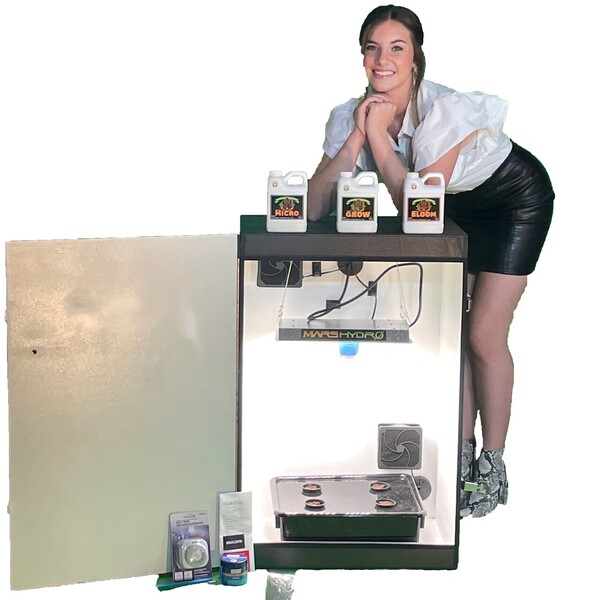
4 Plant Vertical Grow Box

Grow Tent Systems
If you are ready to grow food indoors, a grow tent provides a ready-made environment to contain light and heat.
If your fruit or vegetable requires a steady temperature to grow in, a grow tent is a worthwhile investment.
Grow tent systems are the perfect way to get started quickly with hydroponics.
5 x 10 Foot Heavy Duty Hydroponics Tent
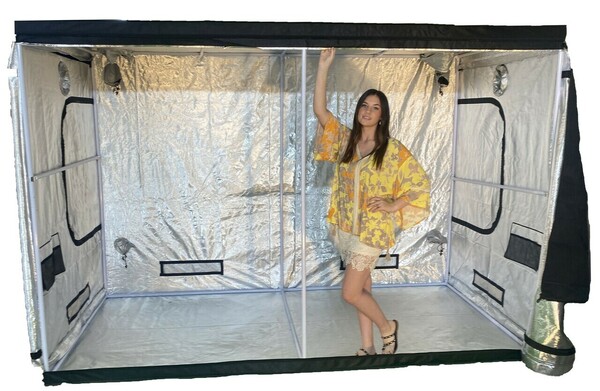
Hydroponics Systems
A hydroponic system will include everything you need to get started on growing your plants indoors.
These ready-to-go modern systems give you a shortcut into growing. Constructing your own DIY hydroponic system requires research and a lot of trial and error.
Buying a hydroponic system will give you the advantage and avoid the time and effort required in sourcing all the hydroponic items required.
4 Plant Hydroponics Kit
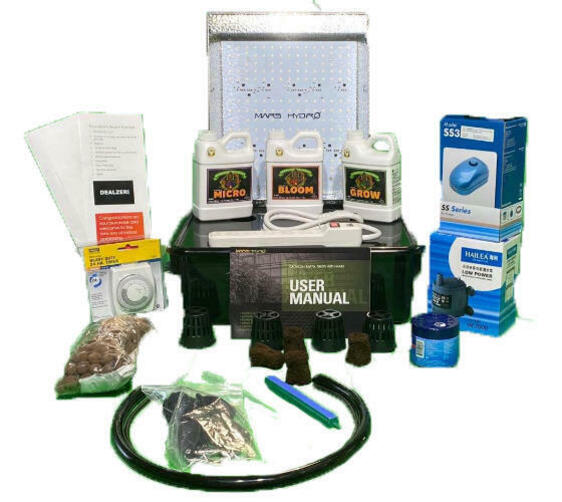
5 Gal 8 Bucket Hydroponic System

LED Grow Lights
If you are growing vegetables indoors, you can replicate the full spectrum light of the Sun with LED grow lights.
Essential for photosynthesis, the light produced by LED grow lights can allow you to grow fruits, herbs and vegetables wherever you want indoors.
29329 Lumens LED Grow Light
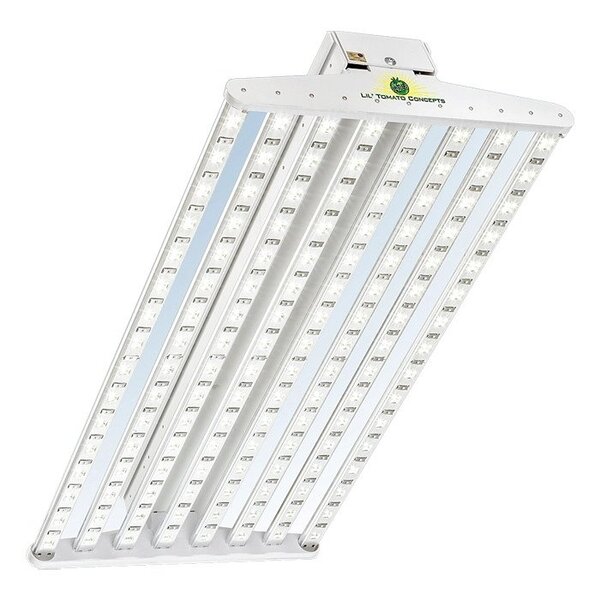
1280W 8X4 LED Grow Light

What Is A Hydroponic Growing System?
A hydroponic growing system is a method of growing vegetables, herbs and fruit without planting into soil.
Instead of using soil, a hydroponic system feeds the plants nutrients and oxygen within the water which passes through their roots.
A hydroponic growing system will require less water to be used than traditional growing methods while also using less space and growing in up to half the time.
The hydroponic plant is grown in an inert growing media as the plants roots are exposed to water and nutrition directly. The nutritional balance along with the pH level of the water is constantly monitored and maintained.
While soil grown plants excerpt energy into finding food and water, a hydroponic plat can redirect that energy into producing a faster growing fruit or flower.
Hydroponic systems allow precise control over the conditions that the plant grows in, providing exactly what they need.
Hydroponic plants are also protected from dangers in the environment such as pests, disease and wildlife. As a result, there is no need for pesticides, which makes the hydroponic vegetables healthier.
Which Hydroponics Method Is The Best?
There are a wide range of hydroponic methods available. Each grower will have created their hydroponic garden to adjust to the plant they are growing and the space available.
Deep Water Culture (DWC)
Deep Water Culture (DWC) is a very simple hydroponic setup. All that is required for this system is a reservoir, grow tray, and air pump.
The DWC system is very reliable, but it relies on the oxygen pump to not fail otherwise the plants may die.
Nutrient Film Technique (NFT)
Nutrient Film Technique (NFT) places the plant roots directly onto a sloping channel as nutrient filled water flows over them.
This system is perfect for vertical growing but requires that the water pump remain working other wise the plants will fail.
Wick and Kratky Hydroponic System
The Wick and Kratky Hydroponic System is a passive method of growing plants. There are no pumps or active components required to manage this system.
The plants are placed in a net cup and suspended above a nutrient-enriched water reservoir. The Wick system carries nutrients from the reservoir to the grow tray.
Aeroponics
An Aeroponic system sprays a nutrient rich mist over the plants 24 hours a day. This process requires less water usage than other systems and provides a more rapid growth of the plants.
Aeroponics require a sophisticated set-up and need to be operated by someone who knows how to maintain the mist pumps.
What Are Some Advantages Of Growing Food Hydroponically?
When you grow food using a hydroponic system, you have complete control over the growing process.
A hydroponic indoor garden can be built specifically to make the best use of the space available, including vertical farming.
If you have limited space and want to save on the water that you use when growing fruit and vegetables, you may consider growing food hydroponically.
Hydroponics Make the Best use of Available Space
You can maximise the space available for growing vegetables using hydroponics. Compared to traditional farming, hydroponic farming can use up to 99 percent less land.
With hydroponic systems, the plant roots do not require a large area of ground to spread out in search of food and water. The water and nutrients are delivered directly to the roods in a hydroponic garden.
This means more plants can be grown in a smaller space. Hydroponic plants can also be stacked vertically, which further increases the plants you can fit in your farmland.
A Hydroponic Indoor Garden Means Reduced Labour
Hydroponics require less maintenance and man-hours compared to other farming methods.
Growing in a hydroponic environment means there is no need for weeding, tilling, insecticide or herbicide application.
Less labour results in reduced running costs and frees up your time for other activities.
Use Less Water With Hydroponics
You can conserve up to 98 percent more water using hydroponic gardens compared to traditional farming.
Conserving water is a major global issue and is an important factor to consider in water-stressed areas.
A hydroponic system recycles the water that is not used by the plants roots, which means that none goes to waste.
Hydroponic Gardens Increase Yields
Since an indoor hydroponic garden creates the ideal conditions for growing, the plants can produce higher yields.
Hydroponic greenhouses can be seen to produce about 240 times the yield compared to traditional farming.
Hydroponic Indoor Gardens are Climate Controlled
A hydroponic garden can be built inside a green house or temperature regulated structure to be adjusted according to the plants requirements.
Your hydroponic plant will not be at the whim of outside weather conditions, pests or lack of sunlight. Your plants can be grown throughout the year, regardless of the temperatures outside.
No Soil Required With Hydroponic Farming
Topsoil is becoming scarce throughout the world due to nutrient degradation, loss of soil structure, erosion, compaction and salinity.
Many locations also suffer from various soil quality, where crops may require a specific soil type.
These facts have reduced the options available for traditional farming in many parts of the world.
With hydroponic farming methods, soil is no longer required, so it is possible to choose to grow any food which is required locally.
Faster Growing Crops with Hydroponic Systems
traditional farming methods can take months to grow crops to maturity. This takes a long time because plants expend a lot of energy growing roots to search for food in the soil.
Hydroponic plants can grow 30-50 percent faster than land-grown crops, as the nutrients are more easily available for them.
Light, temperature, nutritional balance and pests are more easily controlled in a hydroponic indoor garden, so the plants can develop in their ideal growing conditions.
Grow Higher Quality Fruit And Vegetables
Freshness is a major factor in the taste and quality of the fruit and vegetables that we eat.
Local conditions mean that it is not always possible to grow food locally throughout the year.
Traditional farming methods usually pick food before it is ripe and let it grow ripe as it sits in warehouses through the supply chain.
Commonly, ethylene gas is pumped onto fruit and vegetables to artificially ripen them.
Food left to ripen naturally on the plant tastes better and contains more nutrients.
Growing your fruit and vegetables in a hydroponic ecosystem means that your chosen food can be grown locally and throughout the year.
Hydroponics Ensure Predictable Growing Seasons
Seasonality is a reality that traditional farming needs to deal with in order to produce their food.
Some crops such as strawberries are only available during summer months locally and need to be exported in at increased cost during colder months.
Farmers growing food in the ground need to contend with extreme weather conditions such as floods, fires, drought and pest problems.
With a hydroponic greenhouse, our vegetables and fruit can become available throughout the year.
A Hydroponic Indoor Garden Means Supply Chain Reduction
In traditional farming, food is transported over long distances by trucks, contributing to global pollution. The refrigerated trucks used for food transportation are especially fuel guzzling.
To keep the food preserved for longer on the supermarket shelves, fruit and vegetables are often preserved using chemicals.
Since hydroponic farming can grow the food a community needs within the community, there is no need for excessive transportation.
Your vegetables will arrive at your plate fresher and free from preservatives.
References:
Interested in growing your own food as a hobby or interest? We have other pages of information about growing food here.
We hope this beginners guide on How To Start A Hydroponic Indoor Garden has helped you get started on a new hobby.
Follow the link below to discover other cool hobbies and interests.

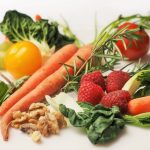
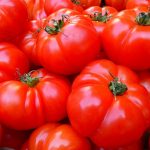
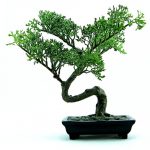



One Response